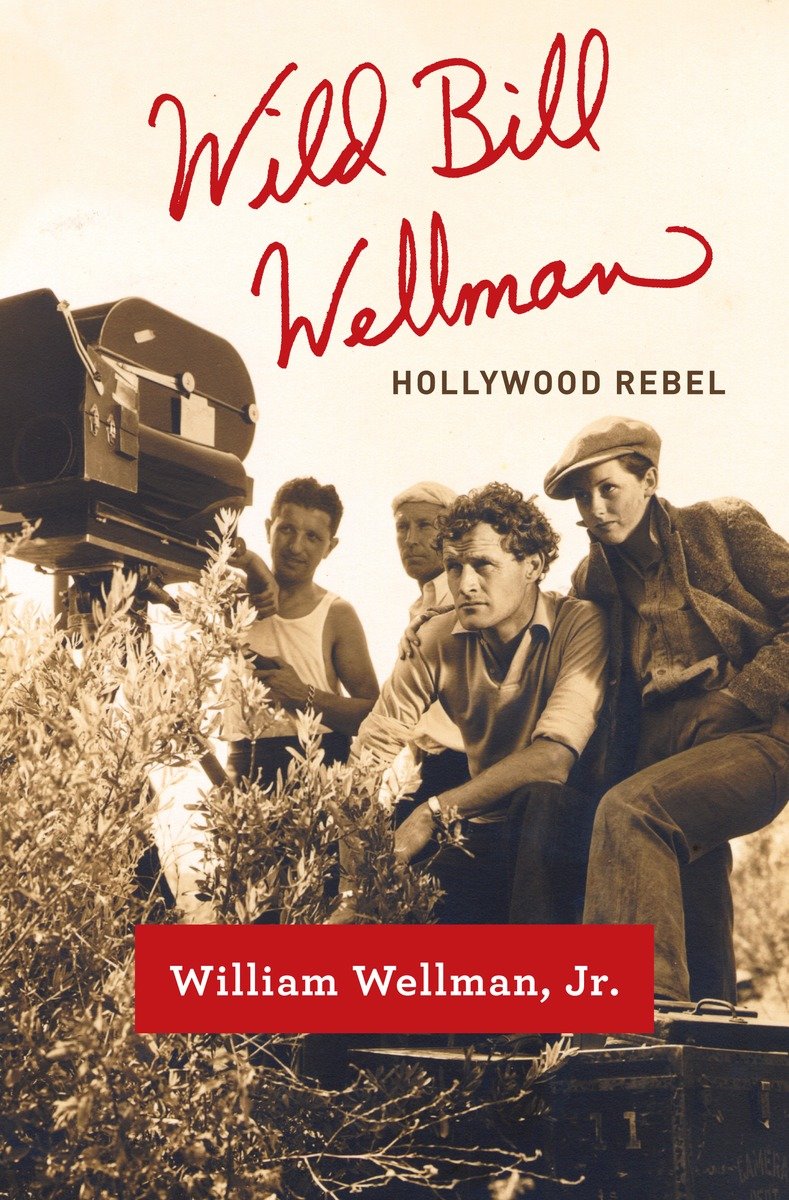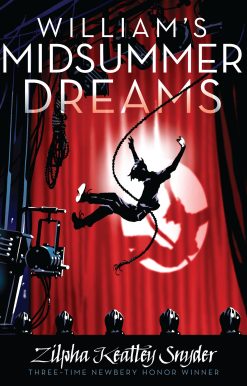No gift registry found click here to create new registry
Cart contain Gift Registry Items cannot add products
Wild Bill Wellman: Hollywood Rebel
30.00 JOD
Please allow 2 – 5 weeks for delivery of this item
Add to Gift RegistryDescription
The extraordinary life—the first—of the legendary, undercelebrated Hollywood director known in his day as “Wild Bill” (and he was!) Wellman, whose eighty-two movies (six of them uncredited), many of them iconic; many of them sharp, cold, brutal; others poetic, moving; all of them a lesson in close-up art, ranged from adventure and gangster pictures to comedies, aviation, romances, westerns, and searing social dramas. Among his iconic pictures: the pioneering World War I epic Wings (winner of the first Academy Award for best picture), Public Enemy (the toughest gangster picture of them all), Nothing Sacred, the original A Star Is Born, Beggars of Life, The Call of the Wild, The Ox-Bow Incident, Battleground, The High and the Mighty… David O. Selznick called him “one of the motion pictures’ greatest craftsmen.” Robert Redford described him as “feisty, independent, self-taught, and self-made. He stood his ground and fought his battles for artistic integrity, never wavering, always clear in his film sense.” Wellman directed Hollywood’s biggest stars for three decades, including Clark Gable, Gary Cooper, Barbara Stanwyck, John Wayne, Lauren Bacall, and Clint Eastwood. It was said he directed “like a general trying to break out of a beachhead.” He made pictures with such noted producers as Darryl F. Zanuck, Nunnally Johnson, Jesse Lasky, and David O. Selznick. Here is a revealing, boisterous portrait of the handsome, tough-talking, hard-drinking, uncompromising maverick (he called himself a “crazy bastard”)—juvenile delinquent; professional ice-hockey player as a kid; World War I flying ace at twenty-one in the Lafayette Flying Corps (the Lafayette Escadrille), crashing more than six planes (“We only had four instruments, none of which worked. And no parachutes . . . Greatest goddamn acrobatics you ever saw in your life”)—whose own life story was more adventurous and more unpredictable than anything in the movies. Wellman was a wing-walking stunt pilot in barnstorming air shows, recipient of the Croix de Guerre with two Gold Palm Leaves and five United States citations; a bad actor but good studio messenger at Goldwyn Pictures who worked his way up from assistant cutter; married to five women, among them Marjorie Crawford, aviatrix and polo player; silent picture star Helene Chadwick; and Dorothy Coonan, Busby Berkeley dancer, actress, and mother of his seven children. Irene Mayer Selznick, daughter of Louis B. Mayer, called Wellman “a terror, a shoot-up-the-town fellow, trying to be a great big masculine I-don’t-know-what. David had a real weakness for him. I didn’t share it.” Yet she believed enough in Wellman’s vision and cowritten script about Hollywood to persuade her husband to produce A Star Is Born, which Wellman directed. After he took over directing Tarzan Escapes at MGM, Wellman went to Louis B. Mayer and asked to make another Tarzan picture on his own. “What are you talking about? It’s beneath your dignity,” said Mayer. “To hell with that,” said Wellman, “I haven’t got any dignity.” Now William Wellman, Jr., drawing on his father’s unpublished letters, diaries, and unfinished memoir, gives us the first full portrait of the man—boy, flyer, husband, father, director, artist. Here is a portrait of a profoundly American spirit and visionary, a man’s man who was able to put into cinematic storytelling the most subtle and fulsome of feeling, a man feared, respected, and loved.
Additional information
| Weight | 0.99 kg |
|---|---|
| Dimensions | 4.15 × 16.72 × 24.31 cm |
| PubliCanadation City/Country | USA |
| Author(s) | |
| Format | |
| language1 | |
| Pages | 656 |
| Publisher | |
| Year Published | 2015-4-7 |
| Imprint | |
| ISBN 10 | 0307377709 |
| About The Author | William Wellman, Jr., is the author of The Man and His Wings. His articles have appeared in Film Comment, Films in Review, and DGA News. He is an actor and screenwriter and was executive producer of Wild Bill: Hollywood Maverick. He lives in Sherman Oaks, California, with his wife. |
Praise for William Wellman’sWILD BILL WELLMAN “A film buff's delight . . . gloriously detailed . . . filled with juicy on-set stories . . . An affectionate, candid and extremely well-researched biography of film director William Wellman.” -Kevin Howell, Shelf Awareness “[A] thorough account of a remarkable career.” -Wendy Smith, Boston Globe “Movies are meant to move, and William Wellman's work demonstrates this in an exemplary fashion. This welcome new biography, Wild Bill Wellman: Hollywood Rebel, briskly and objectively told by his son, does nothing to tame the reputation of the prodigious filmmaker who battled studio head Darryl Zanuck not only verbally in the front office but also with his fists in the field. A Boston Brahmin by birth but a brawler by practice, Wellman remains one of the few Golden Age Hollywood figures still richly deserving of the title (so overused these days but applicable here): Iconic. A terrific read.”- Stephen M. Silverman, author of David Lean “A star-studded homage to a prolific director . . . loving, abundantly detailed . . . Wellman worked with megastars and studio moguls, all portrayed here in lively detail . . . A rich, exuberant life, well-captured in this exuberant biography.” -Kirkus “A thoroughgoing biography.” -Library Journal |
|
| Table Of Content | Introduction: Wild Bill Wellman ix 1. The Rebel 3 2. The Recruit 25 3. The Pilot 53 4. The War Hero 83 5. The Hollywood Ladder 111 6. The Directors’ Board 145 7. The Road to a Classic 163 8. Battlefield Wings 185 9. Consequences and Achievements 209 10. Pranks and Misdemeanors 235 11. I Ain’t So Tough 253 12. The Neon Violin 289 13. Looking for Trouble 307 14. Passions and Prizes 327 15. The Golden Year 345 16. The Road to Ox-Bow 363 17. Picture Patchwork 387 18. Battleground Sends a Message 421 19. Goodbye MGM, Hello John Wayne 451 20. The Final Straw 479 21. The Flame Is Flickering 501 Addendum 521 Afterword 523 Acknowledgments 527 Filmography 529 Academy Award Recognition 581 Notes 583 Selected Bibliography 617 Index 621 |
| Excerpt From Book | From chapter 6: The Director's BoardAs a contract director at Fox Studios, Wellman earned $185 a week. After seven pictures, his salary was . . . $185 a week. The seventh film, The Circus Cowboy, premiered June 19, 1924, at the Loew’s in New York City. This effort was also produced and directed by Wellman, and once again starred Buck Jones and Marian Nixon. Variety, June 29, 1924: “Once in a while along comes a picture full of melodrama with high strung and far fetched situations which, nevertheless, gets over through the excellent direction and strength of the story. This is one of those rarities.” Now, at least, Wellman could afford his own place. Several months earlier, he had said goodbye to Dan Dix and Virgil, and moved into an apartment a few blocks from the studio. It had two rooms plus a bathroom with a shower. One room was a combination living room and bedroom, with a pull-down wall bed. The other was the kitchen. Fortunately, the apartment was large enough to accommodate Wellman’s new roommate—a big chow dog. Before Cowboy had gone into production, Wellman had found Chow, as he named him, walking the streets in much the same way as he had done looking for places to live near the studios where he was employed. Wellman put up notices around the area, then hoped nobody would respond. Nobody did, and the roommates became great pals. Wellman put together a large dog bed, placing it next to his pull-down. The initial problem was Chow’s eating. Dog food was expensive. Often they ate the same things, but Chow’s portions were larger than his master’s and he wanted to eat more often. In order to save food money, Wellman made a deal with his landlord that covered six months at a time. The second problem was what to do with the dog when Wellman was working. The landlord introduced him to an elderly female tenant in their building. She liked animals and took on the job of feeding Chow and letting him out once during the day. This worked quite well. The whole business of working hard for almost a year, making seven quality pictures, but receiving no raise, was definitely wearing on Wellman. He was a big studio contract director. Why should he have to worry about feeding his dog? He had gotten nowhere with studio executives; his agent told him not to rock the boat, that he had a good deal and a bright future. Wellman was not convinced. He even discussed the matter with Chow. “Chow and I went walking in the hills, Chow full of pep, me full of hatred that had been ripening in the last few Buck Jones pictures. My hatred was no raise in salary . . . I really got mad and explained the whole bloody business to Chow, there was nobody around except the squirrels who stopped their tree climbing the minute we came within ear shot. They didn’t even move, just sat very quietly listening to a dumbwit talking business to a dog.” On Monday morning, the great mogul William Fox arrived at the studio. Since nobody would give Wellman a break, he decided to take things in his own hands and go see the big man. Encyclopaedia Britannica: “Wilhelm Fried Fuchs . . . motion picture executive who built a multimillion-dollar empire controlling a large portion of the exhibition, distribution, and production of film facilities during the era of silent film.” At the tender age of nine months, his German-Jewish parents changed his name to the direct English translation, William Fox. Known as “W.F.,” he was a publicity-shy individual whom the press called “a brilliant, excited, energetic, roughneck.”Wellman sat in the roughneck’s office all day waiting for an audience. W.F. knew he was there and guessed for what reason. “Funny how flying could enter this problem but it did, and in a very understandable way. I was never afraid while flying fighting, some few times I couldn’t breathe for a while, but it passed and the fear, such as it was, changed to a frightful anger, topped by a desire to kill. That’s a hell of a topper. Being afraid of a man named Fox was as ridiculous as if I were going to have a fist fight with a nun.” It was getting late and the secretary was preparing to leave. She repeated the familiar phrase that had been used throughout the day, “Mr. Fox is too busy to see you today.” Suddenly, W.F.’s door opened and out he came on his way home. He stopped, looked at Wellman, and said, “What do you want?” Wellman answered with two words, “A raise.” He answered back with two words, “You’re fired,” and went out into the hallway. Wellman followed behind, reminding him that he had made seven pictures for the same salary. W.F. turned and restated, “You heard me, you’re fired.” With this, Wellman grabbed hold of his necktie at the throat and twisted it tight. He considered exploding a right fist in his startled face, then reconsidered after seeing the fright in the mogul’s eyes. No more words were spoken. “I saw the fear of a coward on his face, so I did the thing a face like that deserved, I spit on it. I went out of the studio for good, he went back to his office to cleanse his face of the only sincere tribute he had received for a long time.” Wellman’s name came down from the directors’ board at the Fox Studios, and wouldn’t appear on any other studio billboard for a long time. His agent was disappointed; however, he told the unemployed director that with his credits, jobs would come soon. Soon didn’t happen. The rumor was out that Wild Bill had hit the saliva bull’s-eye, and W.F. made sure the studio executives got the word—Wellman was blackballed. This state of exclusion would last for over a year. |
Only logged in customers who have purchased this product may leave a review.
Related products
-
On backorder 2-5 Weeks to Arrive
Add to Gift Registry140.00 JOD -
On backorder 2-5 Weeks to Arrive
Add to Gift Registry14.00 JOD -
On backorder 2-5 Weeks to Arrive
Add to Gift Registry13.00 JOD -
On backorder 2-5 Weeks to Arrive
Add to Gift Registry






Reviews
There are no reviews yet.